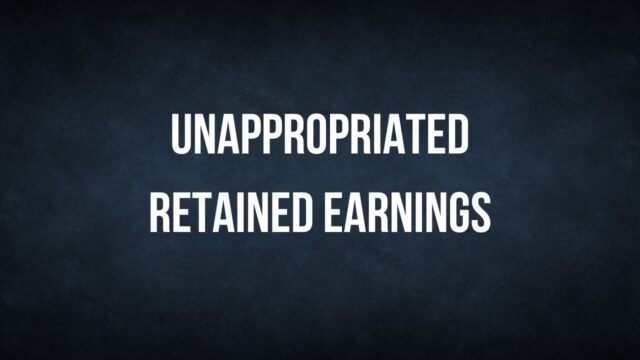
What are unappropriated retained earnings
Unappropriated retained earnings are the portion of a business’s profits that have not been allocated to specific expenses. This money is typically held in reserve to be used for future investments or expansion plans. However, unappropriated retained earnings can also be used to pay dividends to shareholders or to cover other unexpected costs. Because unappropriated retained earnings are not earmarked for specific purposes, they can give businesses a greater degree of flexibility when it comes to managing their finances. As a result, unappropriated retained earnings can play an important role in ensuring the financial stability of a business.
How can a company’s unappropriated retained earnings be used
A company’s unappropriated retained earnings are those that are not allocated to specific purposes. The funds can be used for a variety of purposes, such as repaying debt, funding expansion, or paying dividends to shareholders. In many cases, the decision on how to use unappropriated retained earnings is made by the company’s board of directors. However, in some cases, the shareholders may have a say in how the funds are used. For example, if a company is considering paying a dividend, the shareholders may have to vote on the proposal. Ultimately, unappropriated retained earnings give companies flexibility in how they use their funds.
What is the impact of unappropriated retained earnings on a company’s financial statements
Unappropriated retained earnings represent the portion of a company’s profit that has not been explicitly earmarked for specific purposes. While unappropriated retained earnings can be used to finance a variety of corporate activities, they can also have a significant impact on a company’s financial statements.
One of the most notable impacts is on the balance sheet. Because unappropriated retained earnings are classified as equity, they can increase the amount of shareholder equity on the balance sheet. This, in turn, can make the company appear more valuable and attract investment. Additionally, unappropriated retained earnings can also impact a company’s tax liability. Because these earnings are not earmarked for specific purposes, they may be subject to taxation at the corporate rate. As a result, companies should carefully consider the potential impacts of unappropriated retained earnings before declaring them.
What are some potential uses for a company’s unappropriated retained earnings
A company’s unappropriated retained earnings are the profits that it has earned but has not distributed to shareholders through dividends. These funds can be used for a variety of purposes, such as reinvestment in the business, repaying debt, or providing financial support during tough economic times. While unappropriated retained earnings are not typically distributed to shareholders, they can be accessed if the company declares a dividend.
In this case, the funds are transferred from the company’s retained earnings account to its dividends payable account. Once the dividend is paid out, the balance in the dividends payable account is returned to zero. While unappropriated retained earnings can be used for a variety of purposes, they typically remain invested in the company as a form of long-term financing. This allows businesses to finance expansion or other strategic initiatives without having to take on new debt or sell equity.
Can a company pay dividends with its unappropriated retained earnings
A company’s retained earnings are the profits that it has not paid out in dividends. Unappropriated retained earnings are those that have not been allocated for a specific purpose. A company can pay dividends with its unappropriated retained earnings. However, it is important to note that paying dividends reduces the amount of money that a company has available to reinvest in its business or to use for other purposes, such as repaying debt. As a result, companies need to carefully consider whether paying dividends is the best use of their unappropriated retained earnings. In some cases, it may be more advantageous to reinvest the money or to use it for other purposes.
Is there anything else shareholders need to know about unappropriated retained earnings
Shareholders generally have no say in how these earnings are used, and they are not entitled to receive any portion of them. However, unappropriated retained earnings can be a useful source of funding for a company, providing it with the capital necessary to invest in new projects or expand its operations. For this reason, shareholders should be aware of how much unappropriated retained earnings a company has on its balance sheet. While it is not always possible to know what a company plans to do with its unappropriated retained earnings, knowing how much is available can give shareholders some insight into the company’s future plans.

































